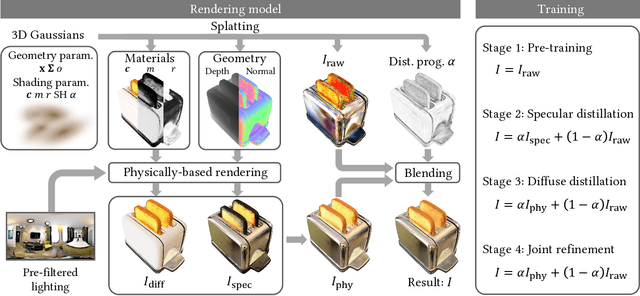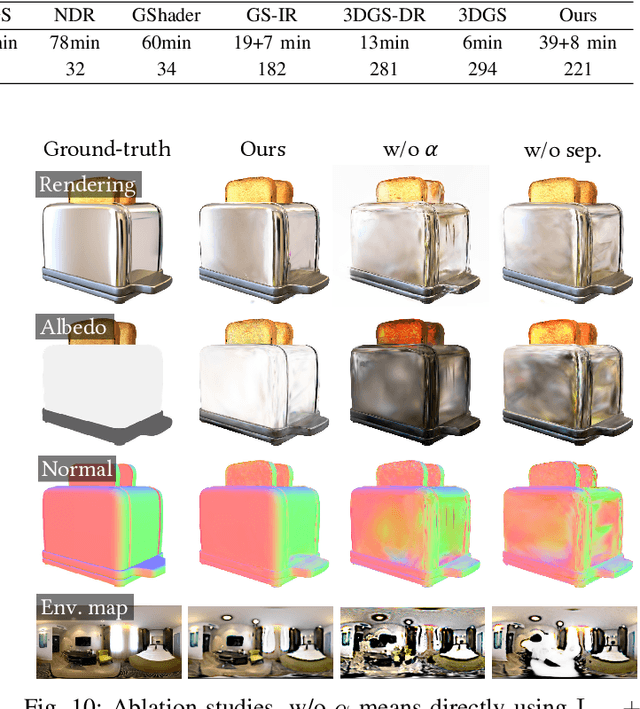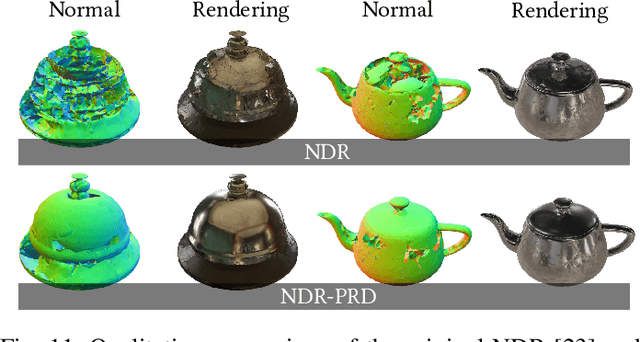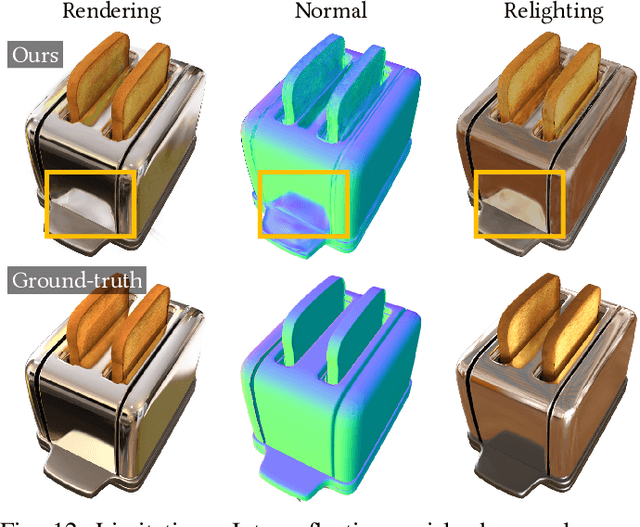Qiming Hou
Progressive Radiance Distillation for Inverse Rendering with Gaussian Splatting
Aug 14, 2024



Abstract:We propose progressive radiance distillation, an inverse rendering method that combines physically-based rendering with Gaussian-based radiance field rendering using a distillation progress map. Taking multi-view images as input, our method starts from a pre-trained radiance field guidance, and distills physically-based light and material parameters from the radiance field using an image-fitting process. The distillation progress map is initialized to a small value, which favors radiance field rendering. During early iterations when fitted light and material parameters are far from convergence, the radiance field fallback ensures the sanity of image loss gradients and avoids local minima that attracts under-fit states. As fitted parameters converge, the physical model gradually takes over and the distillation progress increases correspondingly. In presence of light paths unmodeled by the physical model, the distillation progress never finishes on affected pixels and the learned radiance field stays in the final rendering. With this designed tolerance for physical model limitations, we prevent unmodeled color components from leaking into light and material parameters, alleviating relighting artifacts. Meanwhile, the remaining radiance field compensates for the limitations of the physical model, guaranteeing high-quality novel views synthesis. Experimental results demonstrate that our method significantly outperforms state-of-the-art techniques quality-wise in both novel view synthesis and relighting. The idea of progressive radiance distillation is not limited to Gaussian splatting. We show that it also has positive effects for prominently specular scenes when adapted to a mesh-based inverse rendering method.
3D Gaussian Splatting with Deferred Reflection
Apr 29, 2024Abstract:The advent of neural and Gaussian-based radiance field methods have achieved great success in the field of novel view synthesis. However, specular reflection remains non-trivial, as the high frequency radiance field is notoriously difficult to fit stably and accurately. We present a deferred shading method to effectively render specular reflection with Gaussian splatting. The key challenge comes from the environment map reflection model, which requires accurate surface normal while simultaneously bottlenecks normal estimation with discontinuous gradients. We leverage the per-pixel reflection gradients generated by deferred shading to bridge the optimization process of neighboring Gaussians, allowing nearly correct normal estimations to gradually propagate and eventually spread over all reflective objects. Our method significantly outperforms state-of-the-art techniques and concurrent work in synthesizing high-quality specular reflection effects, demonstrating a consistent improvement of peak signal-to-noise ratio (PSNR) for both synthetic and real-world scenes, while running at a frame rate almost identical to vanilla Gaussian splatting.
 Add to Chrome
Add to Chrome Add to Firefox
Add to Firefox Add to Edge
Add to Edge